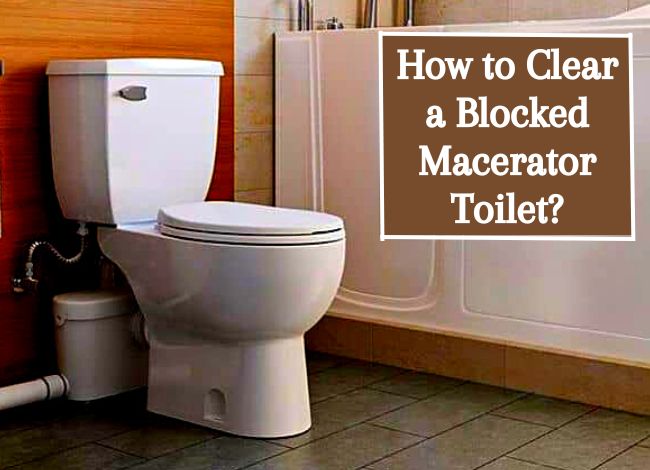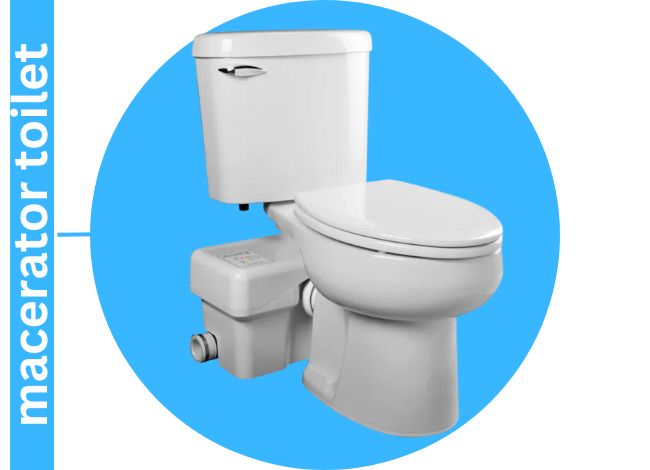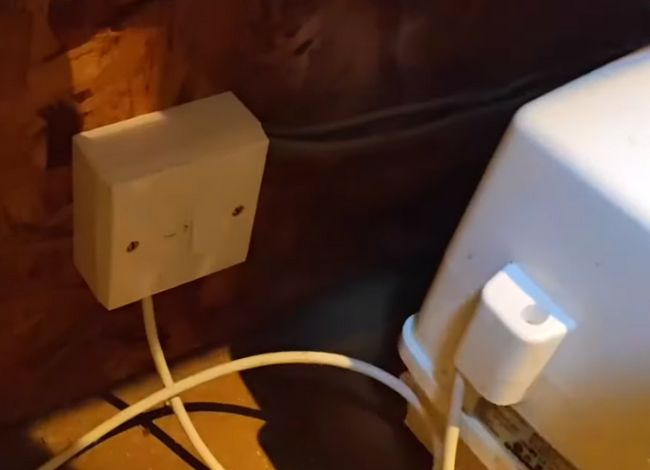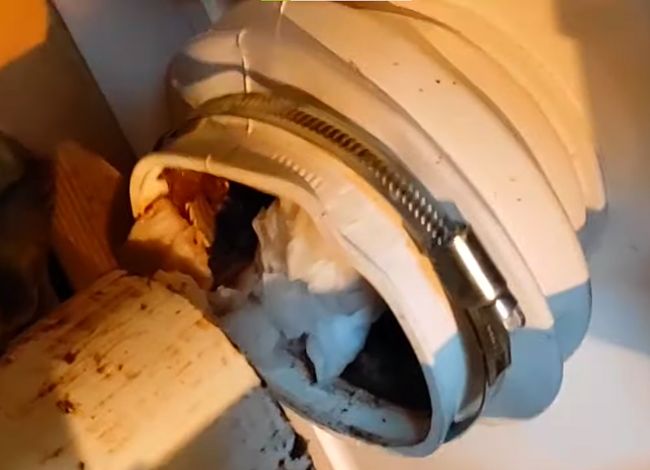
Macerator toilets are gaining popularity worldwide due to their convenience and space-saving design. However, they come with their own set of challenges—especially when it comes to blockages. Unlike conventional toilets, macerator toilets use high-powered blades to liquefy waste and pump it through a small-diameter pipe. When a blockage occurs, it often results in unpleasant odors and clogs that can’t be fixed with a traditional plunger.
In such cases, a different cleaning approach is needed to restore the toilet’s functionality safely and effectively.
Common Reasons for a Blocked Macerator Toilet
Understanding the causes of a macerator toilet blockage can help prevent future problems. Here are the most common reasons:
- Flushing excessive amounts of toilet paper
- Accidentally flushing hard or non-biodegradable objects (e.g., sanitary pads, wipes, plastic items)
- Passing unusually large or hard stool
- A malfunctioning motor in the macerator unit
- Damaged or broken macerator blades
- Electrical supply issues preventing the motor from running
Are Macerating Toilets and Upflush Toilets the Same?
Yes, macerating toilets are often referred to as upflush toilets. These toilets use a unique system where waste is ground up by powerful blades in a macerating unit and then pumped upward through a small pipe into the main drainage system. This makes them ideal for basements or areas far from the main sewer line.
Despite their advanced functionality, macerator toilets require proper maintenance and careful usage to prevent clogging issues.
Here’s the improved, grammatically correct, user-friendly, and keyword-optimized version of the first part of your article titled “How to Clear a Blocked Macerator Toilet? – Easy Ways”. I’ve ensured that the explanation is accurate, clear, and engaging for both users and search engines. Also, missing context and structure have been added:
What is a Macerator Toilet?
A macerator toilet, also known as an upflush toilet, is a specialized system designed to handle waste in places where traditional plumbing isn’t practical—such as basements or areas below the main sewer line. Instead of relying on gravity, it uses a motorized macerator pump to grind solid waste into a fine slurry and pump it upward to the main drainage system.
At the heart of the system is a macerator unit, which contains stainless steel rotating blades, a powerful pump, and an impeller. When the toilet is flushed, the blades churn and mash the solid waste, turning it into a liquid mixture. This liquefied waste is then pumped through small-diameter pipes to the sewage line. A non-return valve ensures that the waste doesn’t flow back into the toilet.
This modern system allows for more flexibility in bathroom installation and is especially useful in properties with complex or outdated plumbing.
How Does a Macerating Toilet Work?
A macerating toilet works by grinding waste and toilet paper into a slurry, then pumping it away to the sewage system—even against gravity. Here’s how the process works:
- When you flush the toilet, the wastewater enters the macerator unit located behind or beneath the toilet.
- The microswitch is triggered, activating the internal rotating blades that grind the waste.
- The waste is turned into a fine, liquid-like slurry using centrifugal force.
- This slurry is then pumped through a discharge pipe to the main sewer line.
- A non-return valve prevents any backflow, maintaining system hygiene and performance.
Here’s the improved, grammatically correct, user-friendly, and keyword-optimized version of your content:
That’s why installing macerating toilets is more expensive than standard toilets. It often requires setting up a completely new plumbing system to ensure the macerating mechanism works efficiently. The macerator pump is the core component of the entire setup. After you flush, the toilet water and waste flow into the macerator, where the solid waste is ground down into a slurry, making it easier to pump through narrow pipes.
Unlike standard toilets that rely on gravity to drain into a large-diameter pipe, macerating toilets allow for horizontal or upward discharge through smaller pipes, making them ideal for installations in unconventional locations.
Here’s the improved, grammatically correct, user-friendly, and keyword-optimized version of the content titled “Guide to Unclogging a Blocked Macerating Toilet”:
Guide to Unclogging a Blocked Macerating Toilet
If your macerating toilet is clogged, don’t worry—it can often be fixed without calling a plumber. Follow this step-by-step guide to safely and effectively unclog your macerator toilet and restore its normal function.
🧰 Tools and Equipment Needed:
- Rubber gloves
- Protective goggles and face mask
- Plier or wrench
- Plumbing snake or flexible auger
- Cleaning brush or old toothbrush
- Bucket or bowl
Step 1: Turn Off the Power and Water Supply
Before doing anything, unplug the macerator unit from its power source to avoid any electrical hazards. Next, turn off the water supply to prevent leaks or accidental flushing during maintenance. Always wear rubber gloves, a face mask, and goggles for safety.
Step 2: Use an Effective Toilet Cleaner
Next, carefully open the lid of the macerator unit. Take proper safety precautions, such as wearing gloves and having pliers ready. Use the pliers to rotate the connectors counterclockwise to dismantle the components gently.
Once disassembled, apply an effective toilet cleaner directly into the unit. You may also use dish soap or a mild detergent to clean the macerator blades thoroughly. Don’t forget to clean the macerator toilet seat and bowl as well to ensure overall hygiene and eliminate foul odors.
Step 3: Reconnect and Deep Clean the Macerator Toilet
After cleaning, reassemble the parts and securely reconnect everything. Turn the macerator on and let the toilet cleaner work through the system for at least two hours. For deeper cleaning, consider using a vinegar and baking soda solution. This natural mix of sodium bicarbonate and vinegar is excellent for breaking down stubborn waste and eliminating bad smells.
Once done, flush the system with clean water and reconnect the power supply. Ensure all components are functioning correctly. This process is highly effective for clearing severe blockages in macerator toilets.
Common Macerator Toilet Problems and Solutions:
- Leaking Issues: Often caused by an incorrect water level or a damaged seal.
- Toilet Keeps Running: Usually due to a stuck flush button or improper fill valve adjustment.
- Bad Odor: Can result from internal blockages or mold and bacteria buildup.
- Loud Noises: A macerating toilet may produce noise due to a blocked trapway, loose bolts, or low water pressure.
- Pump Not Working: Typically caused by clogged inlet/outlet pipes, electrical supply issues, or a faulty float switch.
We are really lucky to have a hard-working, multi-skilled plumber on our team. Collin D. Gallegos, a professional plumber who has worked with us since 2012, is an expert in vent, septic, and drainage systems. He is a Certified Master Plumber and has worked on various commercial plumbing projects. He usually helps our readers resolve plumbing and pipe-related issues with a proper DIY troubleshooting and repair guide.
